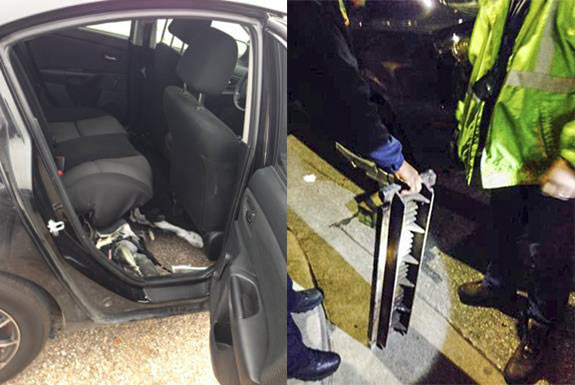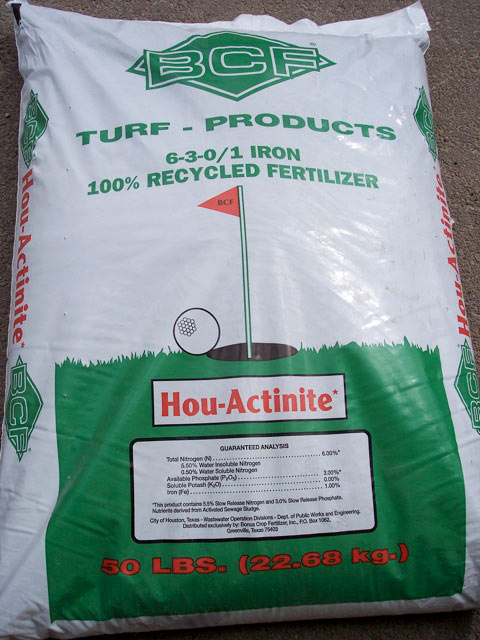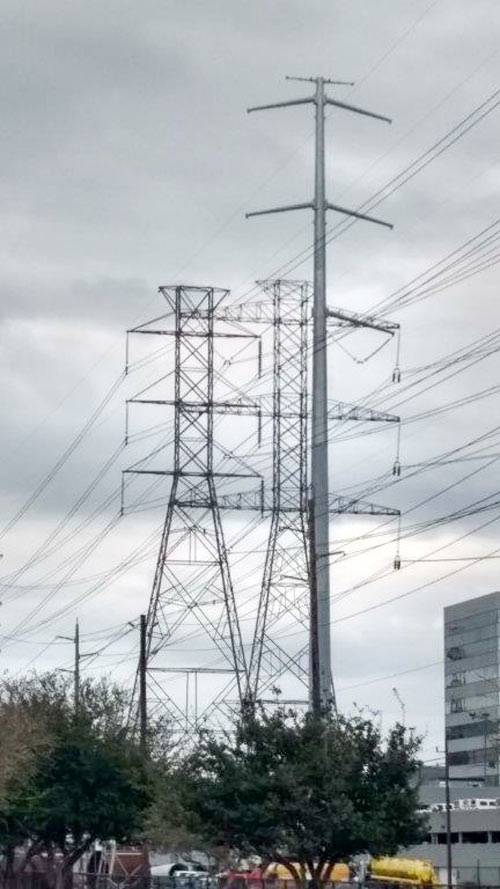PARKER: HOUSTON LOTS MUCH BIGGER THAN WE THOUGHT Acknowledging that the city underestimated the cost of the average homeowner’s drainage fee by $3.25 per month, Mayor Parker blames faulty estimates of the size of the typical Houston residential lot. The city had presumed that the average Houston home had a 1,875-sq.-ft. impervious footprint and sat on 5,000 sq. ft. of land. But appraisal district data and satellite images now show that the typical Houston home sits on a 7,500-sq.-ft. lot and has 2,850 sq. ft. of impervious surface. [Houston Chronicle]




So they fired the moron who made that initial estimate without using HCAD data, right?
Are they counting townhouse lots as 1 lot? It seems that there have been more divisions than expansions, but I could be wrong…
Where are all these “typical” 2850 sq. ft. homes on 7500 sq. ft. lots?
The voters of Houston just gave the city a blank check when they passed the drainage fee with absolutely NO information. And folks, it will only go up and up.
Um… where can I get me one of those 7,500 sq. ft. lots? That seems a tad large.
If you go to http://verify.rebuildhouston.org/prod/mydrain.htm and type in your address you can turn on the impervious layer the city used to calculate your cost. It looks like they used IR imagery to automatically calculate the area based on the pixel locations. It makes me wonder though…if I have a rooftop garden or a sod roof would that fool the system?
Do they count pier and beam foundations as impervious surface?
Tanith, if they used IR and automatic classification, then yes, it would.
who cares, it’s still retarded. raise taxes if you need public infrastructure.
Yeah, finding out my little 1300 sq. ft. house on a 6,350 sq. ft. lot will be paying an extra almost $9 a month was a bit more than I had expected…
I am fine with paying a few bucks a month to fix Houston’s drainage problems as long as developers have some skin in the game and homeowners are given incentives to detain water and use permeable driveways. All new development needs to be held to a best practices standard to avoid having to do another drainage fee years from now. Bioswales, detention, semi-permeable paving and other measures need to be required of all new development. No grandfathering. And homeowners should have their fees reduced by installing rain barrels, rain gardens and permeable driveways. Otherwise, it is just a situation of “when will dummy learn.”
Old School,
I agree with you that we should incentivize some of these strategies; however, it seems unlikely with the current crew at the CoH Public Works & Engineering Department. The city permit office now considers gravel & permeable pavers to be impervious when doing calculations of impervious coverage. I would anticipate that they will continue their logic-defing policies when doing their calculations for the rain tax.
tanith27, thanks for the website, very helpful
No doubt the ever increasing drainage revenues will disappear into the black hole of the general fund to reappear as pension fund contributions…
To be honest, I thought that was a big lot as well… until I pulled up my lot. -Exact size, though smaller house. Willowbend, Willowbrook (not the burb)and Westbury average this size.
I’m also curious about pier and beam homes (plenty of water gets under my house) and from that website apparently my wooden deck is impervious, and my neighbors garage actually causes part of my lot to be impervious??? My driveway has several large cracks in it… can i use that to argue that it is no longer impervious? I think they need to rethink this whole issue, this is a rediculous calculation stupidly implemented. My water bill used to average around $20, thats nearly a 50% increase due to this fee.
If they’re using an optical test to determine permeability, it’s likely IR as Tanith said, which is basically an “are there plants here” test. Permeable pavers, sand, etc will do you no good.
Here’s a standard Landsat 4-3-2 image (refers to the bands used in the picture): http://upload.wikimedia.org/wikipedia/commons/e/e1/Minnesota_Lock_and_Dam_1_006-062-02-1994.jpg
You can see how clearly areas with plants stand out. But note that island in the middle of the river, which has a small amount of red vegetation but is mostly white, probably sand. That’s permeable, but it’s the same color in the picture as the bridge, which obviously isn’t.
Yes, my house (which sits on 2 foot piers with no crawl space enclosure) is considered impervious. I must have just imagined having to level it twice in 4 years due to contraction and expansion caused by ground moisture. Sort of like how I must be imagining the vegetation that attempts to grow underneath it.
The COH is impervious to fair play. Anyone pouring new concrete should be held to a different standard than those of us who aren’t. I don’t mind paying for necessary infrastructure, but not to the tune of a 30% hike when I’m not exacerbating the problem to the same extent others are.
I recall specifically hearing during a counsel debate the issue of pier and beam come up. Can’t recall whether it was the Mayor or CM Costello, but the idea of pier and beam houses getting a break on the impervious cover was quickly shot down. I will tell you that I detain more water under my pier and beam houst during a flood than makes it out on the 1920s era drainage ditches. But, I do drive the streets and would like to see things get fixed. I just want some reform moving forward to incentivize better practices so we don’t have to go and do all this upgrading all over again when developers pave up every last inch of Houston.
Folks you only have one shot to challenge your fee and I encourage you to go to http://www.rebuildhouston.org
and look at your property and see the imaging used to determine impermeability. You have 60 days from the day you receive your notice in the mail.
Our condo community is online but has received the letter so we cannot challenge yet but there are a number of errors and we intend to ask for a reduction. The funds are dedicated to drainage and road projects only and we will now have all projects rated on merit rather than which council person has more pull or screams louder. However, Annise rolled and sold us out by exempting the churches and schools as did out City Council.
What this Proposition does it outlaw debt financing of Drainage and Street projects and changes it to a pay as you go system.
am i reading that website correctly that a deck also counts as an impervious surface? it appears they included it in the impervious surface at my house and I was going to appeal, but I guess it’d be a loser.
A deck is considered impervious, as is a swimming pool or gravel.
Don’t ask me why……………..
Also, if the front of your property is curb and gutter and the back is open ditch, you are charged the curb rate.
The IR imaging is completely off on my townhouse. The image shows that my lot expands onto half of my neighbors house as well… so I’m paying for half of his place too. I protested on the rebuildhouston website but they just sent me an email denying my protest, saying their first estimate is “correct”. What a load of crap.
If you’re holding water under your pier & beam house, you’ve got some problems, and you are also violating building code. Water is required to flow away from the building foundation, not to mention it’s really bad for your house.
Submitting a correction is a fairly simple process if you think your property has been calculated incorrectly. It took me all of ten minutes, and that included getting out a tape measure and measuring every inch of impervious surface on my property. My drainage fee will drop from $8 a month to about $5 as a result.
Tanith27 – It looks like rooftop sod would reduce your impervious footprint, since the dense tree cover over my driveway is reducing mine. Yes! (Please don’t tell the COH.)
Jason,
Some water will go under all pier and beam homes, as well as that ground will absorb some water. I’m not talking about standing water. It also isn’t some simple task to fix either (violating building code) as it has been doing (in my case) this since ~ 1925. Its not like people deliberately violate code by harboring water under their houses. It is disingenuous to treat pier and beam foundation and concrete pad foundation homes the same. How the heck is a wood deck impervious? This whole thing stinks of lies.
I think the big problem is how poorly the cost was communicated, take my own example:
1) The first spreadsheet showed $5.00/month draining fee without exemptions (provided by COH). With all the exemptions, the fee went to $5.38. So basically exempting churches, municipal buildings, schools didn’t move the needle at all.
2) The COH said you could see what your estimate draining fee would be if you did a calculation on your PRI #’s from the HCAD sight. I did, it came out to about $8.00/month. I realized I am on a corner lot and I would probably pay more than the $5.00.
3) My bill comes and it is nearly $12.00.
This, I believe, is what was so poorly communicated: $5.00 – $8.00 – $12.00. People kept getting sticker shock.
From Thomas A.B. Johnson:
No doubt the ever increasing drainage revenues will disappear into the black hole of the general fund to reappear as pension fund contributions…
___________________________
Nice to know there are still some intelligent people around who can see through the “smoke and mirror” politics of City Hall.